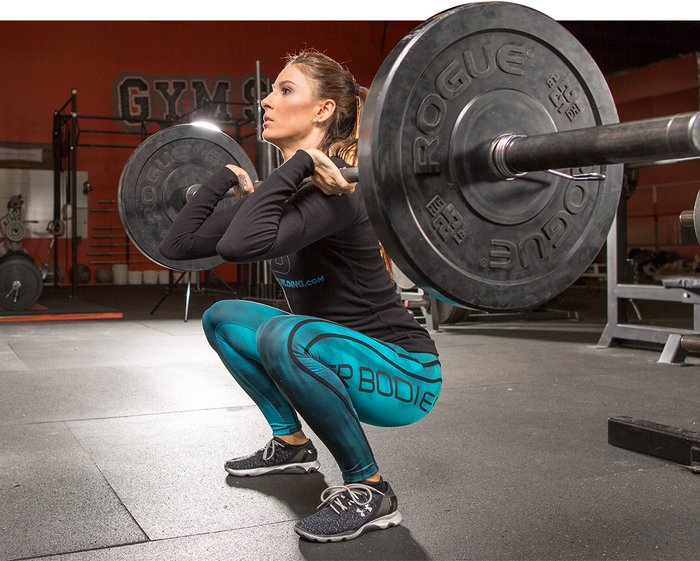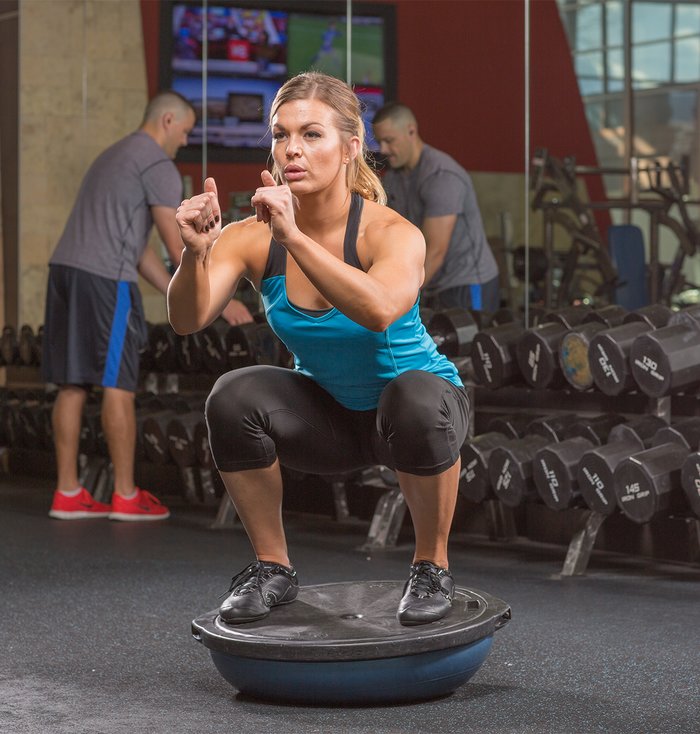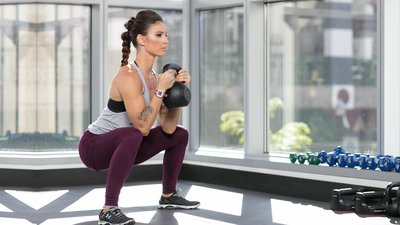Head, shoulders, no knees past toes. If the squat had a theme song, that would probably be it. After all, if you're performing the "king of lifts" and your knees wander just an inch past your toenails, catastrophic injury is sure to occur...right?
As a physical therapist, I've heard this countless times before, and I really wish the rumor would come to an end. Why? Quite simply, it's not true! Here's why you need to stop repeating this pre-lift mantra, and what you should be thinking instead.
Breaking Down the Squat
A successful squat isn't one of any particular weight or percentage of 1RM. More than almost any other lift, a good squat is one that has rock-solid form. For me, this means it hits the following standards:
- Hips drive backward first
- Knees and ankles only bend after hips
- Weight stays on heels, and heels stay on ground
Front squats, back squats, goblet squats—they should all meet these standards. As long as the weight stays on your heels and your butt is back, you're squatting with proper form in my book.

Why start with the hips? When you initiate the movement at either the ankles or the knees, it puts a significant amount of stress on your knees, especially on structures including the menisci, anterior cruciate ligaments, and posterior cruciate ligaments, also known as the ACL and PCL. This happens because the squat becomes quite knee- and quad-dominant, with less activity happening from the back of the body—specifically, at the glutes—to counter these forces. The glutes are made to handle big weights and bear a lot of force. Those other delicate knee structures? Not so much.
Many people consider the squat a quad-focused movement rather than a glute-driven one, and this may be exactly where the problem lies. When you initiate with the knees and ankles, sure, the knees will move past the toes, centering the weight in the forefront of the feet and possibly even lifting heels off of the ground.
This combination—not just the "past the knees" part—would certainly put a lot of strain on the knee, and when done repeatedly with weight, could lead to injury.
How "not past the toes" may be hurting your back
I could see someone reading my breakdown of the squat and responding, "OK, hips first, then. But just to be safe, I'll still keep my knees behind my toes." I would argue against that thinking, though. Limiting your knee flexion is a bad idea!
Our bodies are truly amazing, interconnected machines. They move as a unit, not as isolated sections. When you consciously restricting movement at one joint, a compensation will usually have to occur at other places in the body. If you restrict movement at the knees, particularly with a weight on your back, your body will do one of three things to compensate:
- You will round your back in order to keep your center of gravity over your midfoot.
- You will fall backward.
- You will stick your hips so far back that you cannot actually get down near parallel or a full squat.
Each of these three movement compensations carry with them their own consequences, but I'm going to focus on the rounding of the back, as this is probably the most common. Call it "butt wink" or whatever you want, but this unfavorable change in lower-back positioning causes a significantly greater load to be placed on the spine and hips.
This is not a good thing. Not only are you placing increased load on your spine, you're also putting more load on the vertebrae in a position that puts your discs in a vulnerable position. Doing this with added weight then becomes a huge potential for a disc injury, including a herniated disc—not something you want if you can avoid it, trust me!
Your body, your squat
Another reason I want you to contemplate the "no knees past toes" myth is that everybody is built differently. Some people have much longer femurs (upper leg bone) than others. If you are one of these individuals with a long femur, you can bet that you'll have significant difficulty getting into a full-range squat with your knees behind your toes.

In other words, you really can't expect someone with a long femur to move exactly the same way as someone with a much shorter one. This is why cookie-cutter rules like "no knees past the toes" don't work!
Banish this cue from your pre-lift ritual
The bottom line here is simple: When you are performing a squat correctly—and pushing your hips back first—it is absolutely OK for your knees to track past your toes. In fact, it could be allowing you to hit a full-depth range of motion without rounding your lower back excessively.
Remember, the body works as a unit, and moving properly and in unison allows force that's placed on your joints to be distributed more equally throughout the entire chain. Restricting movement somewhere will only lead to added stress and strain somewhere else, potentially creating injuries that could have otherwise been avoided.
If you're not sure if you are performing a squat properly, that is what I and other physical therapist and movement specialists are here for. Come see us, and we can walk you through it. If lifting is important to you, it's worth the time and money to do it right!

